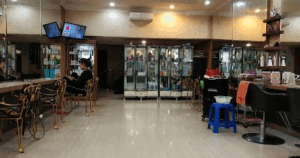Family Touch: I Family Reflexology Supratman Bandung is a holistic approach to wellness that promises nurturing bonds and rejuvenating experiences. Have you ever pondered the potential of connecting with your family on a more profound, tactile level? Could a simple yet cohesive practice like reflexology be the key to unlocking deeper relational dynamics within your household? Engaging in family reflexology could indeed pose an invigorating challenge, yet the benefits it can provide are manifold. This article will elucidate the principles, techniques, and advantages of family reflexology, specifically within the context of Supratman Bandung.
Reflexology, an ancient practice rooted in Eastern healing traditions, posits that specific pressure points on the feet, hands, and ears correlate with different organs and systems throughout the body. The premise is that by applying targeted pressure to these zones, one can effectuate healing and balance not only physically but emotionally as well. In a familial setting, this practice cultivates an atmosphere of tranquility and mutual trust. As members engage in a shared reflexology session, they inadvertently forge deeper emotional connections.
First, let’s delve into the philosophy that underscores family reflexology. This practice embodies a harmonious blend of care and physical touch, allowing family members to nurture each other holistically. Imagine a space where laughter mingles with the gentle scent of essential oils, while soothing music hums softly in the background. The act of giving and receiving reflexology transforms everyday interactions into extraordinary moments of connection.
The environment in which family reflexology occurs is critical. Choose a serene and comfortable setting. Soft lighting, calming colors, and comfortable seating can significantly facilitate relaxation. Consider incorporating elements from nature—perhaps a small indoor plant or a tranquil water feature—to evoke a sense of peace. This foundation enhances the efficacy of the practice as participants sink into a more receptive state of mind.
So, what techniques should families adopt to effectively practice reflexology at home? Begin with simple hand and foot massages, which are generally less intimidating for novices. One of the most accessible techniques involves using the thumbs to apply pressure to the foot’s arch. This area corresponds to the spine and can serve to alleviate tension throughout the body. Similarly, if a family member is experiencing stress or anxiety, focusing on the pads of the toes may provide relief, as these areas relate to the head and neck.
Families can also explore the concept of applying essential oils during their reflexology sessions. Oils such as lavender, known for its calming properties, or eucalyptus, which can invigorate the senses, can be blended with carrier oils to enhance the experience further. These aromatherapeutic elements envelop the participants, creating a multisensory experience that magnifies the therapeutic effects of reflexology.
Intriguingly, family reflexology invites not merely physical touch but also emotional vulnerability. In today’s fast-paced society, the significance of carving out time for authentic connection often takes a backseat. Engaging in reflexology allows families to slow down, enabling members to vocalize their thoughts and feelings. As they massage each other’s feet or hands, dialogue flows naturally, fostering an environment conducive to heartfelt exchanges. These interactions catalyze deeper understanding, acceptance, and empathy among family members.
Moreover, integrating family reflexology into regular routines can yield unexpected advantages. Research has indicated that families practicing regular tactile interactions tend to report increased happiness and decreased levels of stress. When family members regularly engage in tactile, bonding activities, they cultivate an emotional reservoir that can be drawn upon during challenging times. Such resilience is vital during life’s inevitable pressures, be they from work, school, or other obligations.
Nevertheless, this practice isn’t without challenges. Some family members may feel apprehensive about physical touch or may be entirely new to reflexology. It is imperative to approach this endeavor with patience and an open mind. One might consider easing into the practice, starting with brief sessions and progressively extending them as comfort levels rise. Alternatively, families could engage in group discussions to address any hesitations regarding physical interaction, fostering mutual trust and understanding.
If deeper connection and family cohesion are the objectives, it is also essential to employ a playful approach. Introduce games or themes during reflexology sessions. For example, family members might draw icons or symbols that represent their feelings on their feet before the practice begins. These creative elements infuse lightheartedness into what could otherwise become a daunting endeavor.
As families in Supratman Bandung delve into the world of family reflexology, they can anticipate an array of manifestations. Regular practice is likely to yield significant improvements in both mental and emotional health. Families could emerge feeling more attuned to each other’s states of being, where mutual support becomes intrinsic and seamlessly integrated into their daily lives.
In conclusion, the journey into family reflexology is a multifaceted adventure worthy of exploration. It opens pathways to connection far beyond mere physical interaction, delving into emotional realms that often lie dormant in the hustle and bustle of contemporary life. Engaging with family in this manner, set against the beautiful backdrop of Supratman Bandung, fosters an enriched understanding of one another—one foot rub at a time. So, what are you waiting for? Embrace the challenge, and immerse yourself in this splendid journey of physical touch and emotional connection.





Leave a Comment